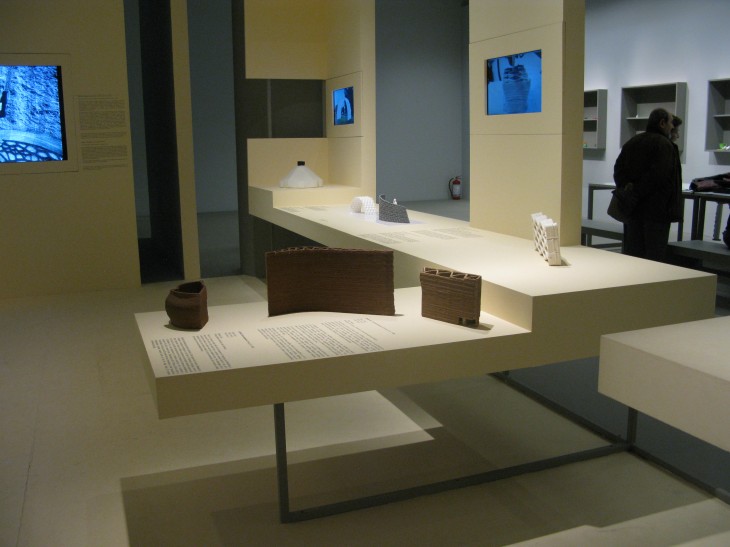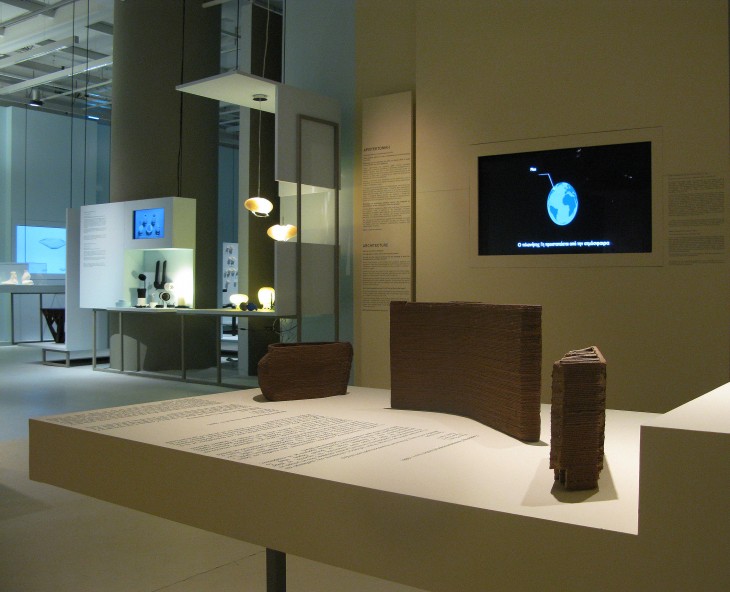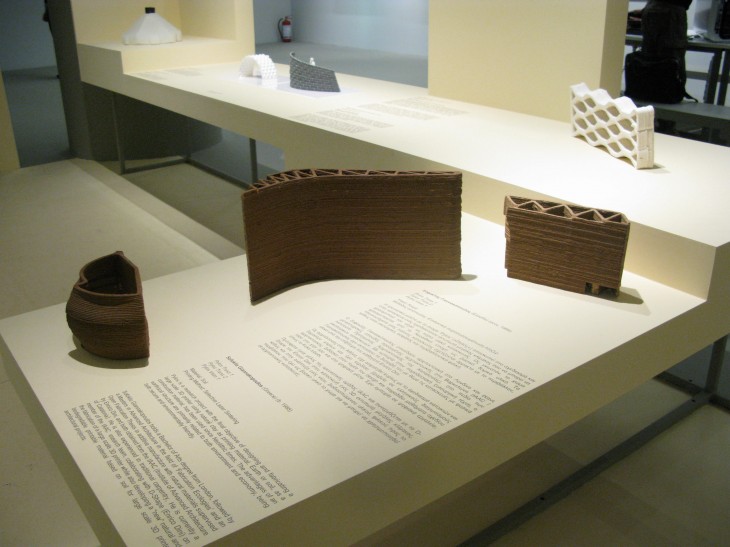The Pylos Research project, developed by IAAC Fabrication Researcher Sofoklis Giannakopoulos, supervised by Areti Markopoulou, with the Robotic Supervision of Alexandre Dubor, is currently being exhibited in the Onassis Cultural Centre in Athens as part of the 3D Printing Exhibition ”An exhibition from the future… now”.
3-D printing, of everything from houses to hearts and pretty much all you can imagine in-between, is the coming revolution. And not only for industry, but culture and creativity too.
In the first major exhibition in Greece dedicated entirely to this amazing technology, more than 100 pieces by luminaries of Art, Architecture, Fashion, Science, and Product design combine to hint at the transformed commercial, public and private spheres of tomorrow.
In the first stages of the Pylos research project a new protocol has been set up towards the investigation of the material chosen, soil, and the relative science, both physical and chemical, connected to this material.
Earth, or Soil, as a construction material, has been used since Neolithic times. The advantages of an earth – soil structure are primarily related to both environment and economy, being both secure and environmentally friendly. These constructions also offer the benefits of natural insulation, fire protection, air circulation and more, with regards to their comparison to conventional building techniques and typologies.
The project focused on the behavior of the soil when mixed with other ingredients, towards a better understanding of the material and potential composites. Each sample developed showed different behaviors, all of which have been recorded, also through the testing of their tensile strengths, to then compare these results towards the development of a prime material. So as to fulfill this phase of the research, a crash machine was developed and built. Graphs were then implemented showing the results of the relative material testing, generating a comprehensive analysis of the materials and results.
The interest to develop additive manufacturing, specifically 3d printing, as a construction method, moreover when printing with natural materials, particularly in this time of economic and environmental crisis, is undeniable. The material results obtained through the development of the first phase of this research project are extremely promising, and consequently push the interest towards the further development of the machine itself.



